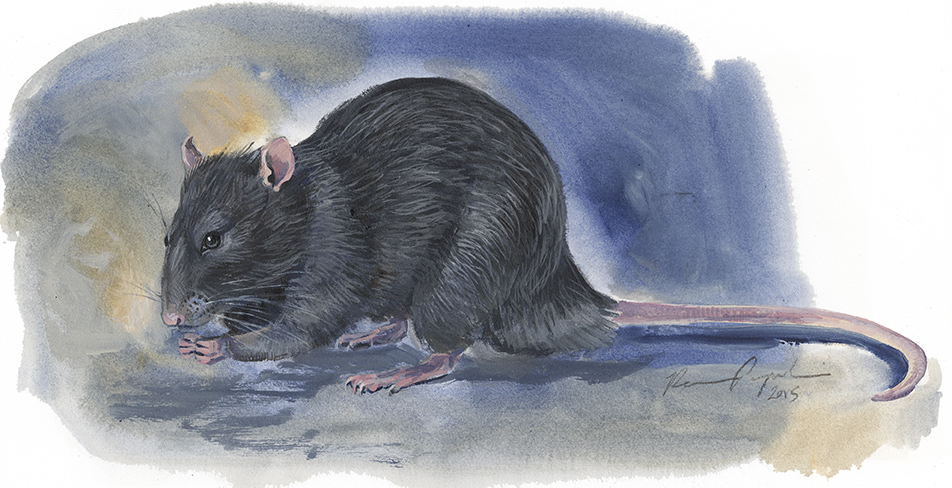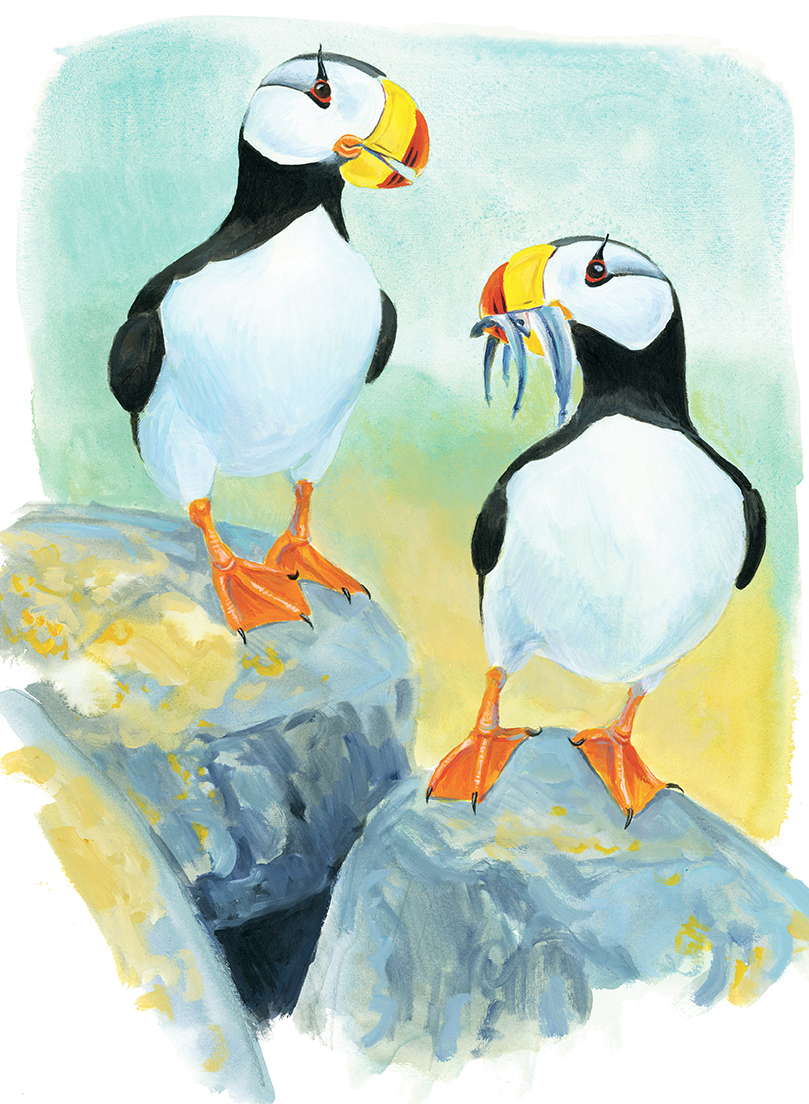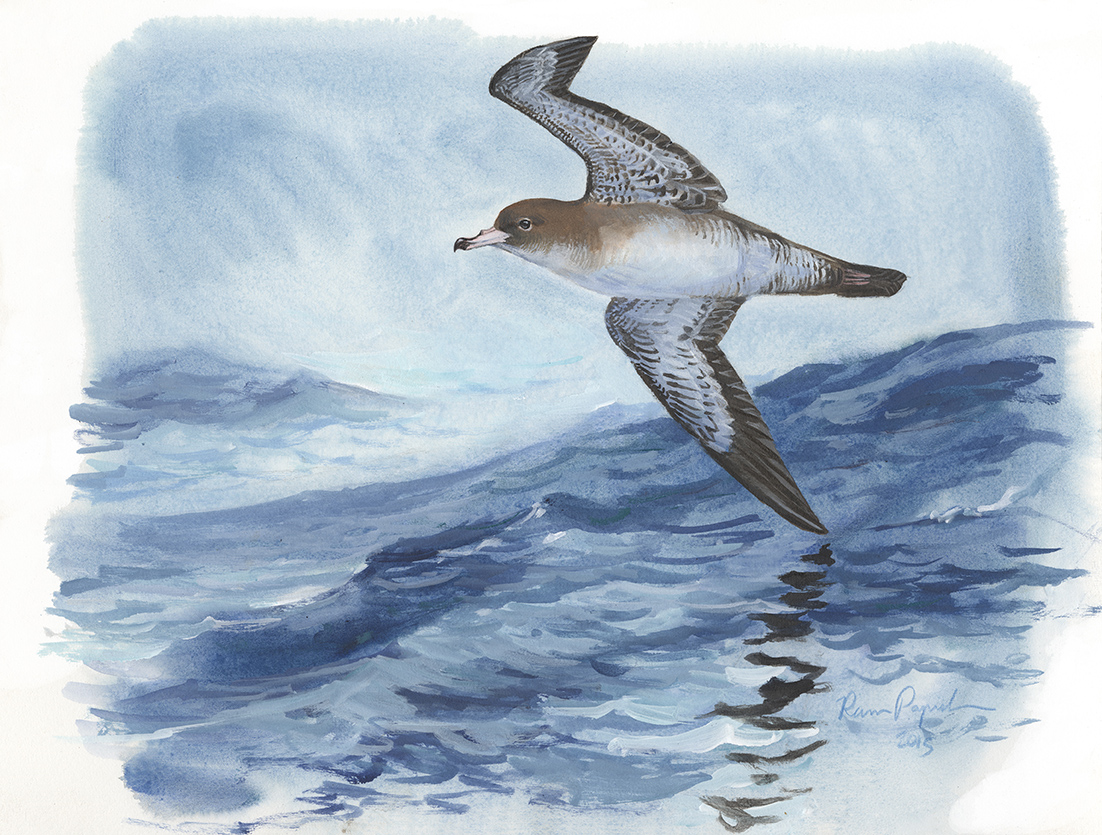
The middle-school classroom activity package Invasive Species and Seabirds was developed by the Seabird Youth Network, Thalassa Education, Coastal Conservation, Island Conservation, Oikonos, the Alaska Maritime National Wildlife Refuge, the Ecosystem Conservation Office, Aleut Community of St. Paul Island, and the St. George Institute. Funding for the curriculum was provided by the National Fish and Wildlife Foundation.

Invasive species have caused some of the most dramatic effects on isolated ecosystems, such as islands, and are a leading cause of species extinctions globally.
Through the lessons and activities, students will gain knowledge by:
• Reviewing the concepts of seabird biology;
• Exploring concepts of biodiversity, systems, interactions, sustainability and stewardship;
• Determining what an invasive species is and exploring the characteristics of various invading species;
• Determining major threats to biodiversity, including the role of humans in introducing invasive species;
• Participating in environmental stewardship as it relates to invasive species; and
• Exploring ways to involve their community in invasive species stewardship behaviors.
The curriculum was developed in response to a need for more community outreach and education regarding invasive species and seabirds on the Pribilof Islands, Alaska and the Juan Fernandez Islands, Chile.

The curriculum is available for free down-load, below.
The curriculum was designed with rural schools in mind, where teachers may come from outside the community and have little or no understanding of the local ecosystem. Curricula summary information is provided in Power Points to help teachers from varying backgrounds understand the biology of seabirds, history of invasive species, and need for biosecurity plans. Power Points can be used as teaching aids or substituted for a textbook.
All five lessons in this curriculum are designed to complement the Seabird Youth Network’s Seabird curriculum to be completed in 2017. Lessons are targeted for 6th to 8th grade, and the labs can be taught at a higher level with the Extend and Explore options. The curriculum aligns to the Next Generation Science Standards and Alaska State Science Standards.
The Seabird Youth Network website has large games and activities that reinforce the concepts presented in Lesson 1-4.
Download the overview page
Download the whole curriculum
Invasive Seabirds Lessons Full Curriculum
Invasive Seabirds Lesson 1 Seabirds Part 1 (ppt)
Invasive Seabirds Lesson 1 Seabirds Part 2 (ppt)
Invasive Seabirds Lesson 2 Seabirds (ppt)
Invasive Seabirds Lesson 3 Seabirds (ppt)
Invasive Seabirds Lesson 4 Seabirds (ppt)
Download each individual lesson (pdf and Power Point) separately. (lesson 5 does not have a ppt document)
Lesson One
Invasive Seabirds Lesson 1 Seabirds (pdf)
Invasive Seabirds Lesson 1 Seabirds Worksheet (pdf)
Invasive Seabirds Lesson 1 Seabirds Teacher Keys (pdf)
Invasive Seabirds Lesson 1 Seabirds Part 1 (ppt)
Invasive Seabirds Lesson 1 Seabirds Part 2 (ppt)
Lesson Two
Invasive Seabirds Lesson 2 Biodiversity (pdf)
Invasive Seabirds Lesson 2 Biodiversity (ppt)
Invasive Seabirds Lesson 2 Biodiversity Teacher Keys (pdf)
Invasive Seabirds Lesson 2 Biodiversity Worksheets (pdf)
Lesson Three
Invasive Seabirds Lesson 3 Consequences (pdf)
Invasive Seabirds Lesson 3 Consequences (ppt)
Invasive Seabirds Lesson 3 Consequences Teacher Keys (pdf)
Invasive Seabirds Lesson 3 Consequences Worksheets (pdf)
Lesson Four
Invasive Seabirds Lesson 4 Stewardship Biosecurity (pdf)
Invasive Seabirds Lesson 4 Stewardship (ppt)
Invasive Seabirds Lesson 4 Stewardship Biosecurity Teacher Keys (pdf)
Invasive Seabirds Lesson 4 Stewardship Biosecurity Worksheets (pdf)
Lesson Five
Invasive Seabirds Lesson 5 Case Studies Eradication (pdf)
Appendices
Appendix II: Education Standards
Appendix III: Seabird Fact Sheets
Appendix IV: Invasive Global Impact
Appendix VI: 100 Worst Invasive Species
Curriculum Review:
We’d love to hear what you think about our curriculum on ‘Invasive Species and Seabirds’. Please take a few minutes to complete this short on-line survey.
